Bad Lisbon
I was once unlucky to find myself in Lisbon...
I understood everything about this city right away when I couldn’t buy a metro ticket.
The ticket terminals’ interface was designed by Hitler’s personal designer, a sadist and psychopath. It may seem that there is an English button on the screen. However, the button only translates half of the labels into English, while some remain in Portuguese.
What should I choose: Bilhete Viagem Metro or Bilhete Ida e Volta Metro?
The second ticket costs twice as much — that’s the only way to figure out that Ida e Volta means “round trip” in Portuguese.

Half of the ticket terminals at the station were not working, which could only be found out after going through all the stages of purchasing a ticket. Therefore, I managed the first metro ride in about ten minutes, but then a quest began.
It turned out that Lisbon has such a stupid system: if a metro ticket was previously recorded on a card, it is no longer possible to add a train ticket to it. You have to buy a new card. The absurdity is that the card is the same for all types of transportation, but you can only load one type of ticket onto it.

After three days, I still couldn’t figure out how to pay for transportation in Lisbon. Due to incorrectly purchased tickets, I ended up with 3 identical cards in my pocket, the machines swallowed 7 euros for nothing, and on the last day, I spent a whole 20 minutes buying a single ticket, which made me scream obscenities in Russian at the entire station.
Throughout the trip, the city systematically pushed me to the edge.
Portugal is a hot country. In summer, temperatures easily reach 35 degrees Celsius with 100% humidity. However, Portugal generally lacks air conditioning anywhere.
Misery to those who came to Lisbon in the summer! You won’t find any shelter from the heat anywhere. The trains here are as dreadful as the old trains in Moscow. Buses, trains, and metros have no air conditioning. Meanwhile, the carriages are always packed to the brim.
The Portuguese metro in summer is a monstrous sweaty stench and heat that makes your head spin, in the best traditions of India.

But even in cafes, you won’t escape from the heat. Instead of air conditioning, they have ceiling fans that provide little relief. More upscale establishments may have air conditioners, but they can’t afford to pay for the refrigerant, so they operate at a temperature of +21 degrees Celsius.
And the last hope to breathe coolness shattered when I arrived at the hostel. There was no air conditioning even there. After all, any Arab knows that in a southern country, you can live without windows and doors, but not without air conditioning!
The hostel was opened in a regular apartment on the ground floor of a residential building. The windows of the first room faced directly onto the street, but they were closed to prevent burglars from entering. Therefore, I got the second room.
In the second small room of 15 square meters, there were 4 people living, and there were no windows at all. The only source of air was the door to the corridor, which they constantly closed at night, apparently to ensure that I would suffocate in this Lisbon.
The hostel owners were also great, very kind and hospitable people. However, they were a bit absent-minded. They gave me bed number 2 and storage drawer number 3. Another guest was given drawer number 2, and he guessed the bed himself — and slept on mine. The next day, the owners took my belongings and carefully placed them on the floor because they thought I had left. Apparently, I must have asked to go home in my sleep.
In the cramped room, there were three other guests besides me. The first occupant who took my bed was silent and modest. The second occupant was a well-behaved French woman.
The lovely French woman fluttered around the small room like a canary in a cage. She only ventured outside in the evening and returned at 3 o’clock in the morning. The rest of the time, she was preoccupied with herself, oblivious to anything around her.
Waking up around noon every day, she would unload an entire store of cosmetics onto the bed and indulge in perfuming herself until evening. The first hour was spent applying various creams one after another along the length of her sun-kissed pedipalps. The second hour was dedicated to manicures and pedicures, spending about half an hour on each pair of limbs. On the third and fourth hours, the French woman would go to the market and return with a woven basket filled with forest berries, which she would eat, rub on her face, and even use as toilet paper — or so it seemed, as the entire room, hallway, and kitchen were filled with dishes of strawberries, raspberries, peaches, and blueberries.
Finally, the Frenchwoman powdered herself, applied eyeshadow, colored her lips, and defined her eyebrows. Cosmetics of all kinds occupied the bed and nightstand, and I studied the entire process of female self-care during these days.

And of course, the Frenchwoman performed all the procedures in such poses that even a sick thumb stopped coughing for a while...
Oh yes, the sick Nepalese! That was the third neighbor. A poor student from Nepal who came to look for work (actually not), brought along with him an unknown Himalayan disease to science. Every night, he was struck by explosive coughing fits and moaned in the most natural way, like those experiencing heroin withdrawal.
I endured all this chaos bravely until the landlady threw away my earplugs. Fuck! Ass!
Very bad Lisbon
It wasn’t immediately that I understood what was wrong with Lisbon. In the city, you get a strange sensation: everything is incredibly beautiful to the point of nausea.
It wasn’t until the third day that I realized the nausea had nothing to do with the beauty. I was actually physically nauseous, and it was related to one small detail. Do you know which one?
Here, take a look. There is a truly beautiful Portuguese sidewalk, which is called “Portuguese pavement” in urban design. It’s an entirely distinct type of sidewalk, with an incredibly cool arrangement of flat stones assembled into a mosaic with a repeating pattern, such as waves.
The entire city of Lisbon is paved with such sidewalks. Entire squares are covered in an elaborate pattern, a valuable heritage from the great empire.


Even the outskirts of the city are tiled, the whole of Lisbon is literally paved with this tile, both in the city center and in the residential neighborhoods.

It seems like there is nothing more beautiful than a city with such tile!
But here’s the thing, it is dazzlingly white. And the fact is that in Portugal, the sun shines all year round. The tiles reflect the light and very, very strongly glare in the eyes. It becomes practically impossible to walk around Lisbon — your eyes start to hurt within half an hour. Even sunglasses don’t fully help: the light manages to hit your eyes with a punch from below.
It was precisely because of the bright light that I developed a headache and started feeling nauseous, and I thought I didn’t like the city.
Look, even in the photos, you can see this glare — and there’s nowhere to hide from it, the whole city is covered in tiles! Lisbon was definitely designed by a sadist. You’ll be begging for mercy when you find yourself in Lisbon without sunglasses.

Sunglasses are sold on every corner in Lisbon. You will be offered them too. It’s better to buy them. If you refuse, they might offer you hashish because sunglasses are sold by drug dealers here.
Portugal is one of the poorest countries in Europe. Against the backdrop of overall economic lag, the country faced a surge in crime and drug addiction in the 1990s. Gradually, efforts were made to combat these crimes, and in 2001, full decriminalization of drugs was implemented. They were not legalized for sale and possession, but now even heroin carries only administrative responsibility. Of course, not for smuggling.
It was the best solution for a poor country. The number of drug addicts did not decrease, but there was a sharp reduction in the number of fatal overdoses and cases of using contaminated substances that dealers and drug users produced using makeshift methods. Additionally, HIV infection rates also declined.
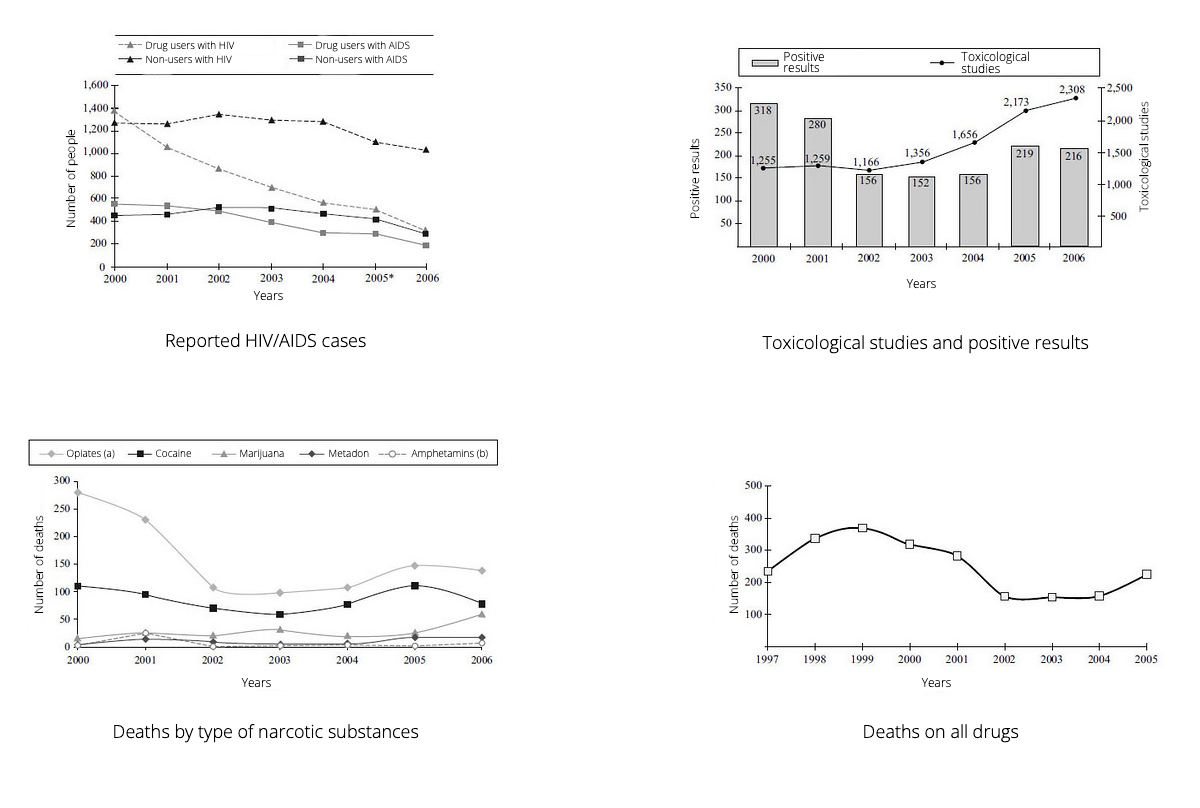
The mechanism of “legalization” is very simple. It all comes down to economic risks: as long as drugs are prohibited, they remain expensive because dealers have to take significant risks when selling them. Once minor drug trading no longer carries prison sentences, the risks decrease, and drug prices drop.
The availability of drugs does not increase the number of drug addicts. On the contrary, the decreased price of heroin mobilizes impoverished layers of consumers. While not everyone seeks treatment for addiction, at least a majority have the means to afford single-use syringes and condoms. As a result, mortality rates decline.
This fact is so cynically calculated and unbelievable that it will take a long time for the spiritually elevated Russia to believe in it. But it’s a mistake. While Portugal may not have defeated drug addiction, it has triumphed over its deadly consequences.
After decriminalization, the streets of Lisbon were flooded with hashish traders. They usually disguise themselves as hat and sunglasses vendors. The vendors are very persistent and constantly offer to sell sunglasses. If you refuse, they whisper behind you: “Maybe something else? Hash, marijuana?”
This person with glasses is a drug dealer.

I haven’t tried buying from them, but I came up with a way to detach myself. You need to say: “No hashish. Russia. Vodka, heroin?” — the traders run away in fear.
Experienced tourists write that the dealers are not genuine.
Lisbon’s hustlers are a tourist scam. Locals buy from elsewhere, while tourists fall for it. Of course, because no one mentioned legalization! Only the decriminalization of penalties was discussed.
Good Lisbon
The good Lisbon starts with tile.
Azulejo is the name of the Portuguese ceramic tile used to decorate the facades of buildings. The reader should already be familiar with it from the story about Porto.

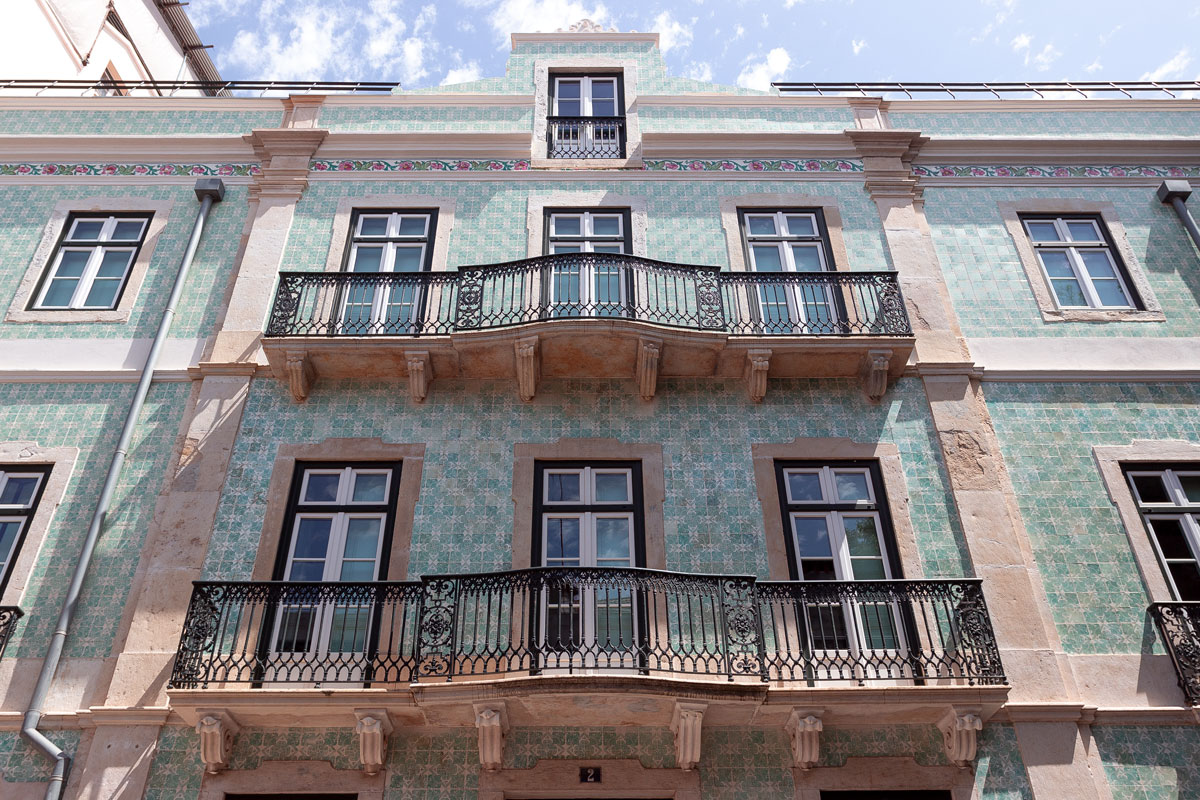
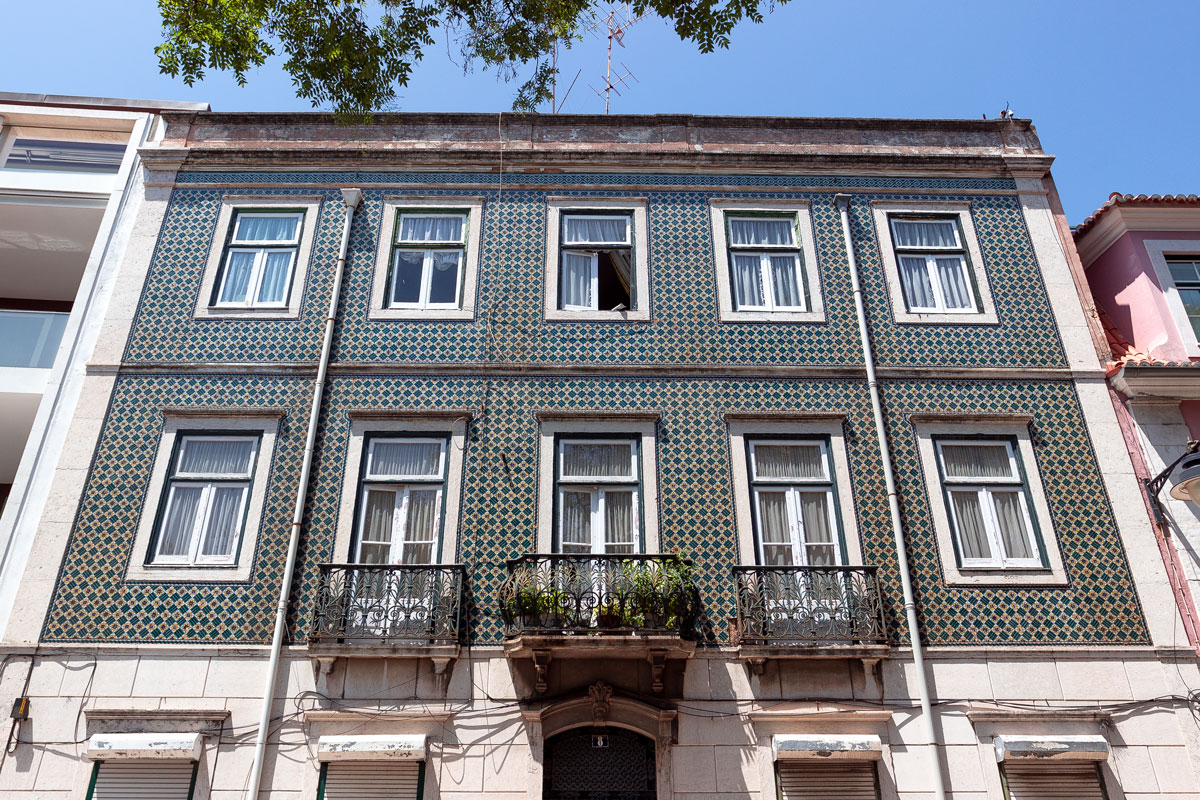

If not, then I won’t talk about it again. I’ve already proclaimed Porto as the most beautiful city in Europe. Lisbon can only surprise with its tiled houses those who have never been to Porto.
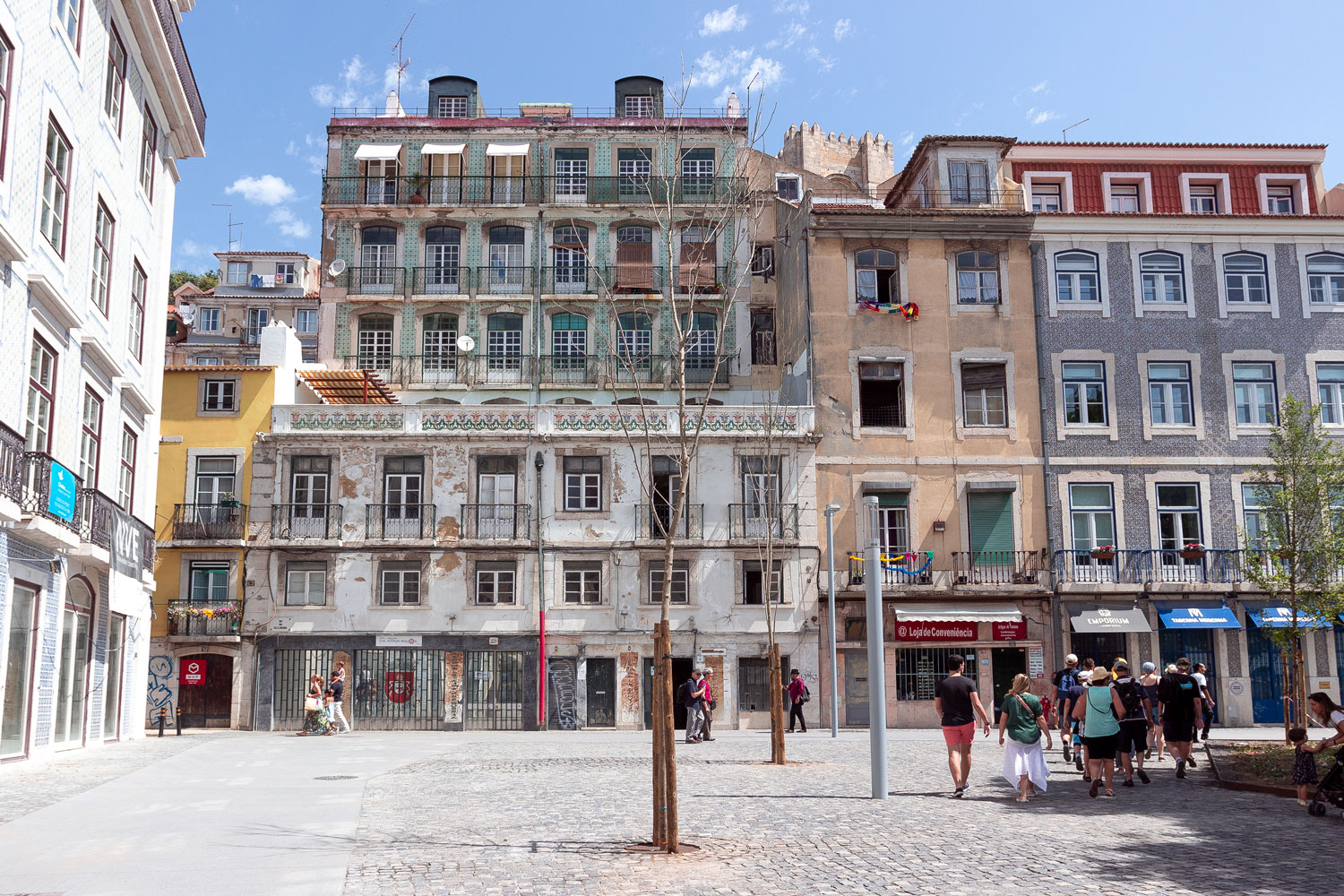
Porto is a much less wealthy city, and it doesn’t have as luxurious houses as in Lisbon. Azulejo is used there for port warehouses and slightly distorted bungalows, while in Lisbon, entire palaces are adorned with it.
But the amount of tiles in Porto is five, ten, a hundred times greater. One street in this northern city contains as much azulejo as can’t be collected from all of Lisbon.
Furthermore, in Lisbon, typically only the ground floor is tiled. Rare houses are completely covered in tiles. For Porto, it’s a common practice.

Lisbon suffers from a lack of coherence. This city is grandiose in spirit, but in reality, it is only assembled from separate magnificent places without cohesiveness in between.
The atmosphere of Lisbon evokes a sense that just around the corner, literally, historical architecture with narrow streets and pleasant cafes will begin.
In reality, the historical architecture is preserved in a couple of separate quarters at one end of the city. The narrow streets are located in another end. Pleasant cafes can be found in a third area, while grand monuments are in a fourth.
It is impossible to see everything in one place in Lisbon, and it is also not possible to walk around it all. It’s easy to spend an hour traveling from Palace Square to the statue of Jesus, and then another two hours returning to the city center.
Each corner of Lisbon is good in its own way. Take Palace Square, for example, one of the most pleasant places in the city.
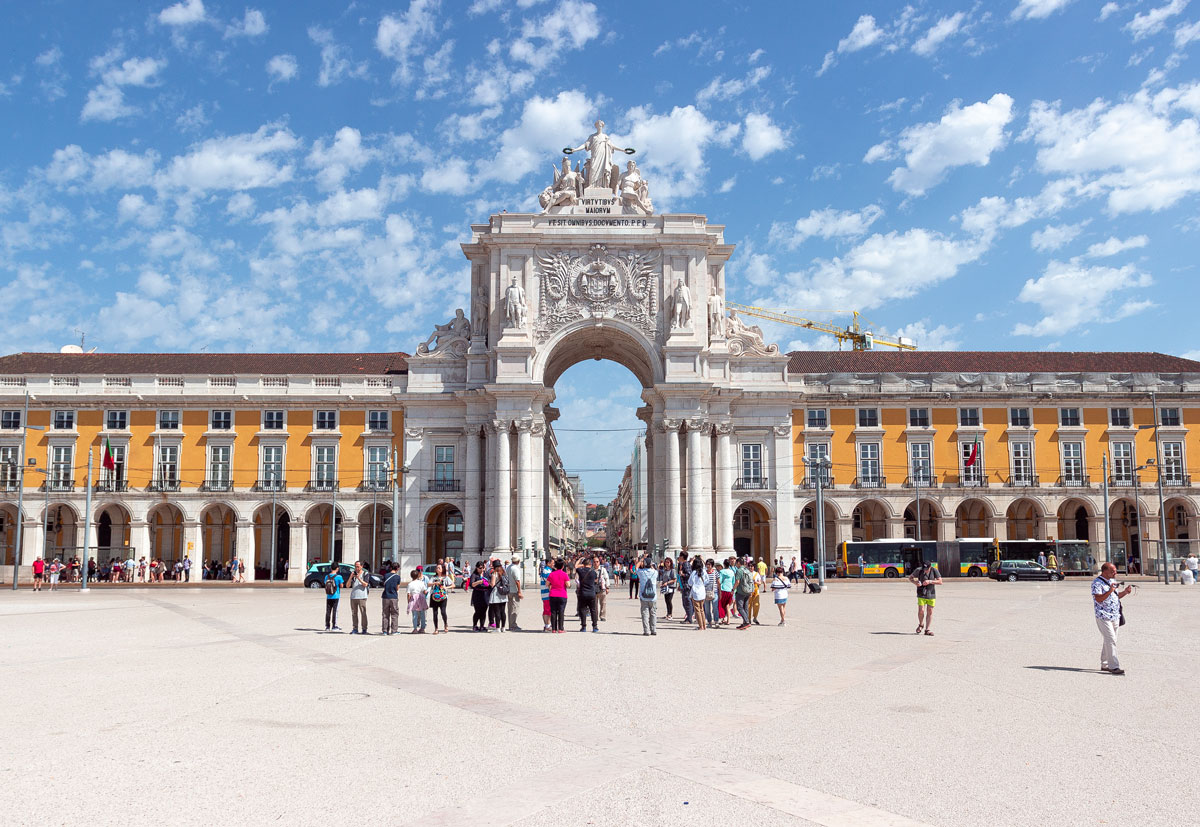
Shades of yellow and gray against the backdrop of a blue sky are truly delightful. It resembles St. Petersburg.
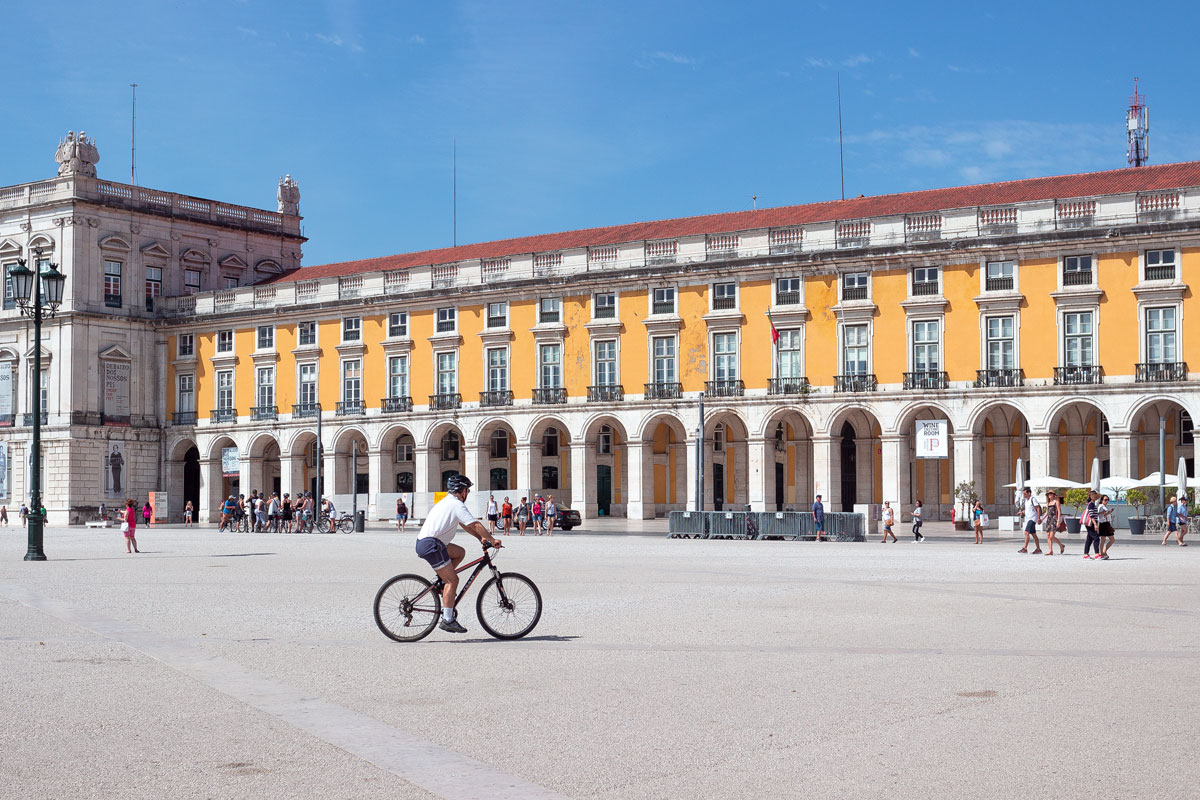
In 1908, the Portuguese king was assassinated on the square, and two years later, the monarchy was overthrown in the country.

From the monarchy, the most impressive artifact remains — the steps that once led directly from the sea to the palace, of which the square was a part.

However, the revolutionaries did not touch the palace. It was destroyed by an earthquake long before the revolution. Prior to that, one could literally walk from the ship onto the balcony using those steps — they led from the sea to the square. Very much in line with Portugal’s spirit.


From Palace Square, another colossal monument of Lisbon is visible — the giant red bridge.
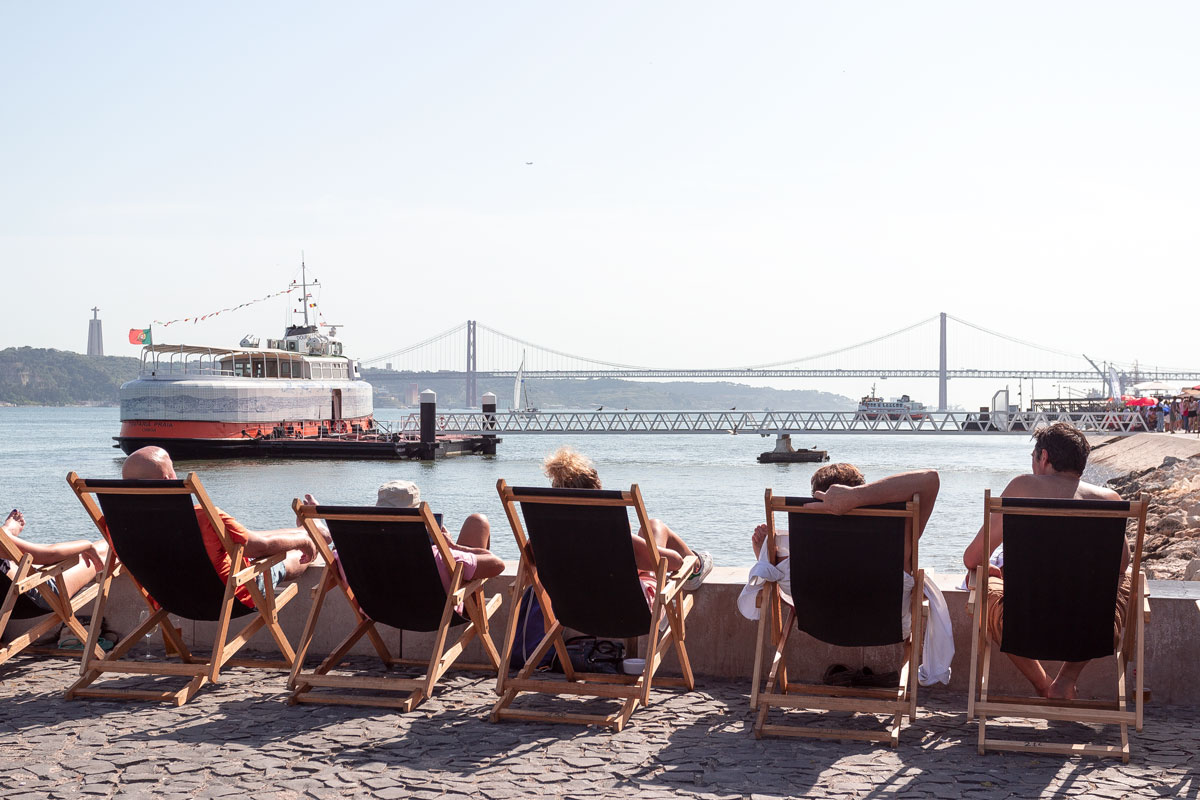
The red bridge, passing over the bay... we have seen this somewhere before! The Lisbon bridge bears a striking resemblance to the bridge in San Francisco.
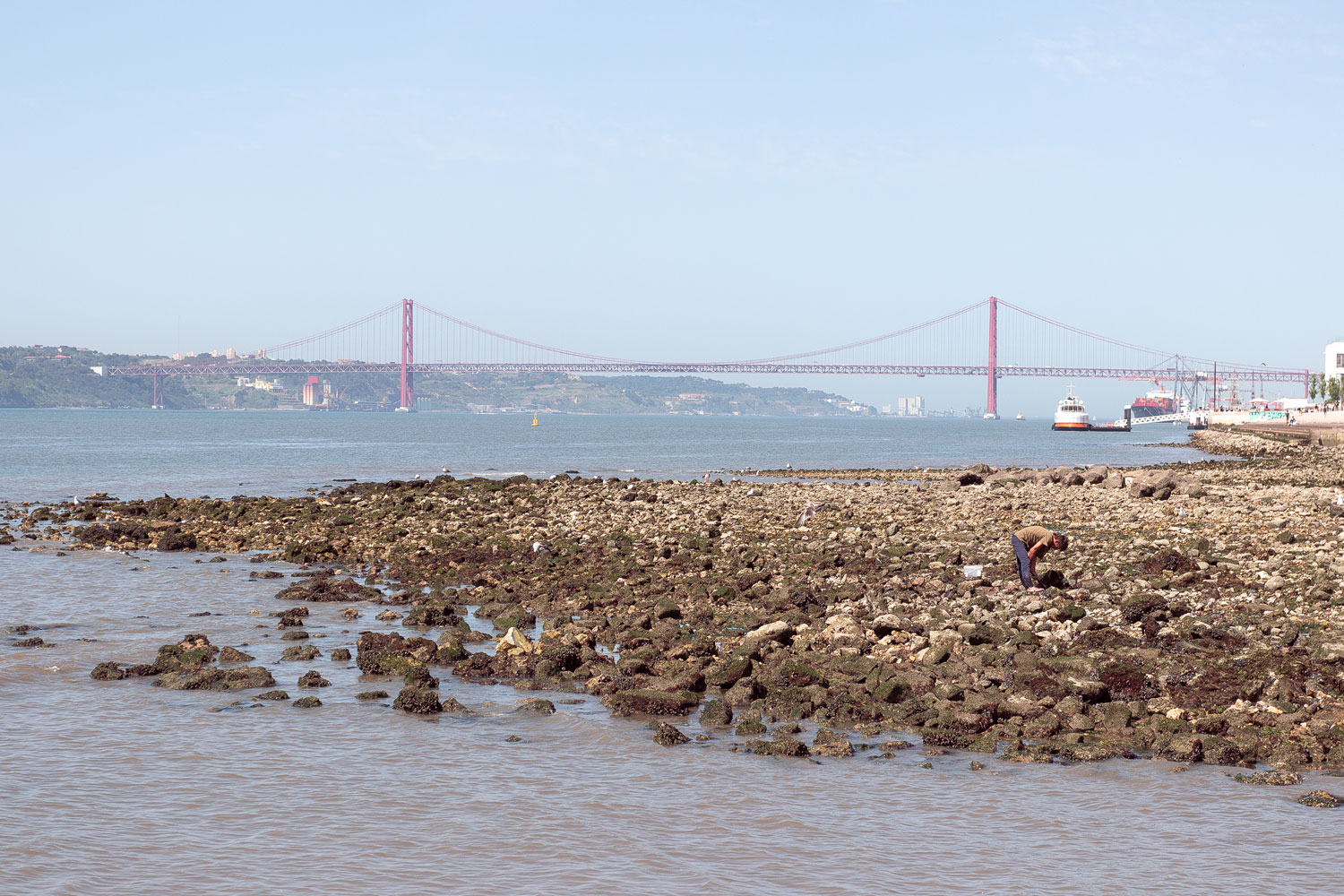
Before my trip to Portugal, I thought that the bridge in Lisbon and the Golden Gate Bridge were built by the same architect. I naively believed that the architect of both bridges was Portuguese and that the bridge in Lisbon was constructed before its American counterpart. It looks so much like an early prototype of the “Golden Gate.”
It turns out that it’s the other way around. The Golden Gate Bridge was built 30 years earlier. The bridge in Lisbon was indeed constructed by an American company, but a different one that built the neighboring bridge from San Francisco to Oakland. The Portuguese bridge is not a prototype at all, but rather a copy inspired by the one in the USA.

The structures of the two bridges differ significantly. A good example of perception at work: people compare not the structure of the bridge, but rather its color and overall appearance. Indeed, it is very similar. Almost as beautiful as in San Francisco.
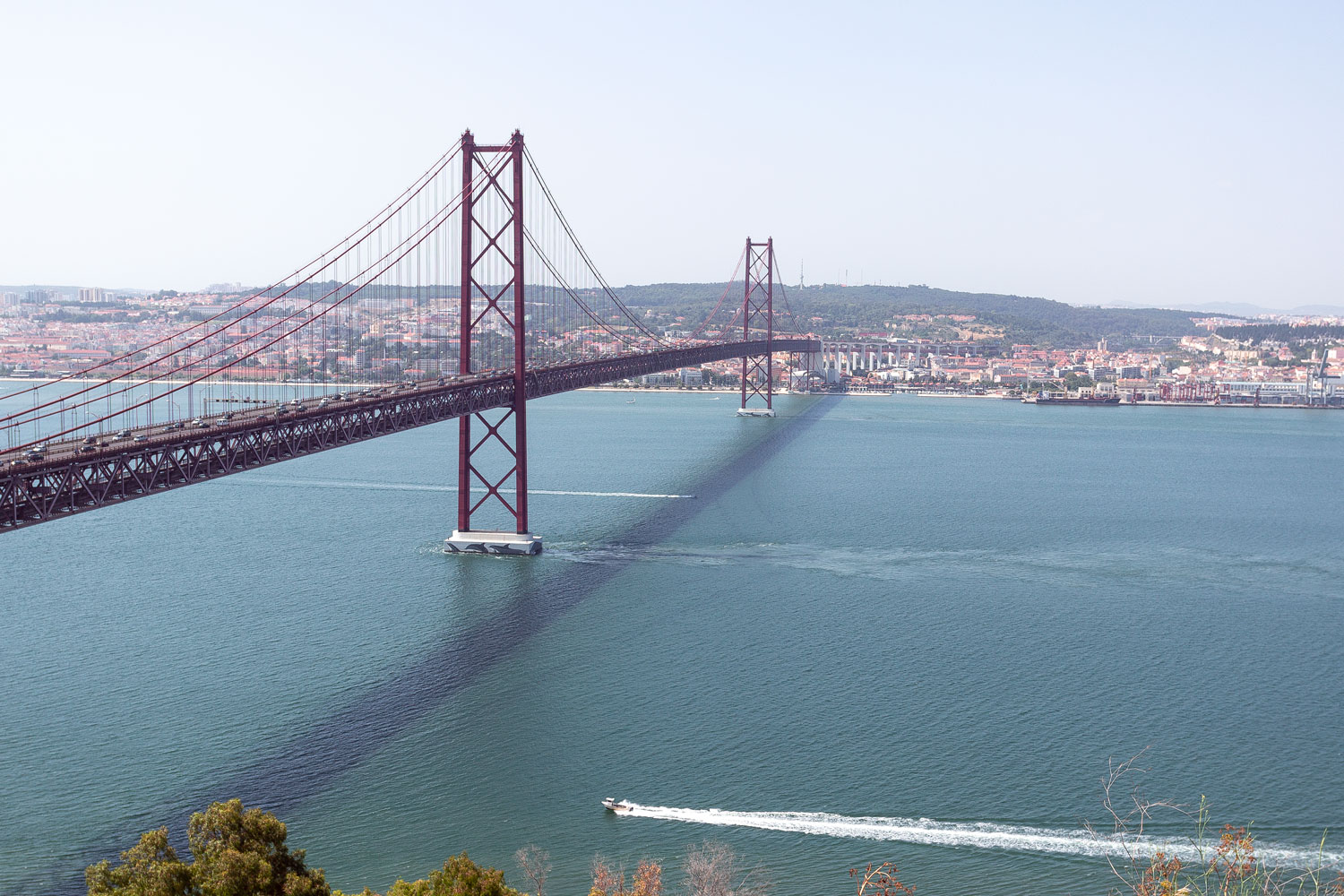
There is only one issue. Upon closer inspection, it turns out that the bridge “buzzes”. The central part of the road is not covered with asphalt but consists of iron bars. Passing cars, when their wheels hit the bars at high speed, produce a buzzing noise.
This sound doesn’t subside during the day or night, and woe to those who live near the bridge. It is mostly surrounded by industrial areas. Getting close to its base is very inconvenient, and the absurd buzzing and endless industrial zone spoil the overall impression.
No, this is not San Francisco. In the Californian city, there is a green park stretching near the bridge, inhabited by coyotes and deer, which can be reached on foot from the city. The districts of Lisbon are an industrial ghetto compared to the American dream.
The disappointment also came from the statue of Jesus. It, like the bridge, seemed older than the statue in Rio de Janeiro, as Brazil was once a colony of Portugal. It is logical to think that the Portuguese brought to the New World everything they loved back home, isn’t it?
But the statue of Christ in Rio appeared 30 years earlier than in Lisbon. And up close, the Lisbon Jesus looks so blatantly awful not because it’s older but because the sculptor had no talent.

The bridge, like the statue of Christ, is the perfect example of Lisbon’s inconsistency. Both places are iconic, yet it’s impossible to reach either of them easily.
To reach the bridge, one needs to take a suburban train and then walk for half an hour and navigate through an industrial area. At the base of the bridge, there was an expensive yacht club with a restaurant, while nearby on the pier, homeless people engaged in sexual activities in the only spot with a perfect view.
To reach Christ, you first need to arrive at the port. Then, pay for the ferry by card and wait for it to arrive – they seem to operate at 20-minute intervals. After that, you need to take the ferry to the other side and transfer to a special bus, which is more expensive and less frequent than regular ones. Even Google Maps doesn’t know the route or bus number.
And there you arrive on the last trip, eager to see the city at night. And a miracle awaits you: the statue is open until 6 PM
The statue!
Oh well, never mind. The author is a determined adventurer, not accustomed to backing down. And here I am, circumventing the fence and finding a less steep section of the mountain where Jesus stands, climbing it with a tripod and a camera slung over my shoulder.
This picture is for you, dear reader.

And these legs, stung by a cactus, are for me.

Beautiful Lisbon
To see Lisbon as beautiful, you need cunning.
Beautiful Lisbon lies in a different plane, in a different dimension. You will never find it if you approach it as just another European city. Lisbon is the westernmost point of Europe. Imagine that it is the beginning of America.
Then suddenly everything will fall into place: the inconvenient terminals, the rushed dashes between the square and the bridge. Europe is a kingdom of museums within walking distance. Lisbon, on the other hand, doesn’t fit into the framework of a European city; it is a U.S. metropolis, just without skyscrapers.
To see the beautiful Lisbon, one must look beyond the museums, beyond the bridge, and beyond the statue of Jesus.
When you arrive at Christ, don’t look at him. Look beyond: at the bridge and the city visible from the high hill. When you arrive at the bridge, don’t get too close: it will spoil the impression with the buzzing of cars.
But if you’re in the city, don’t look for entire streets! Beautiful Lisbon is hidden in the details of the old town, captured in the trap of sunglasses.
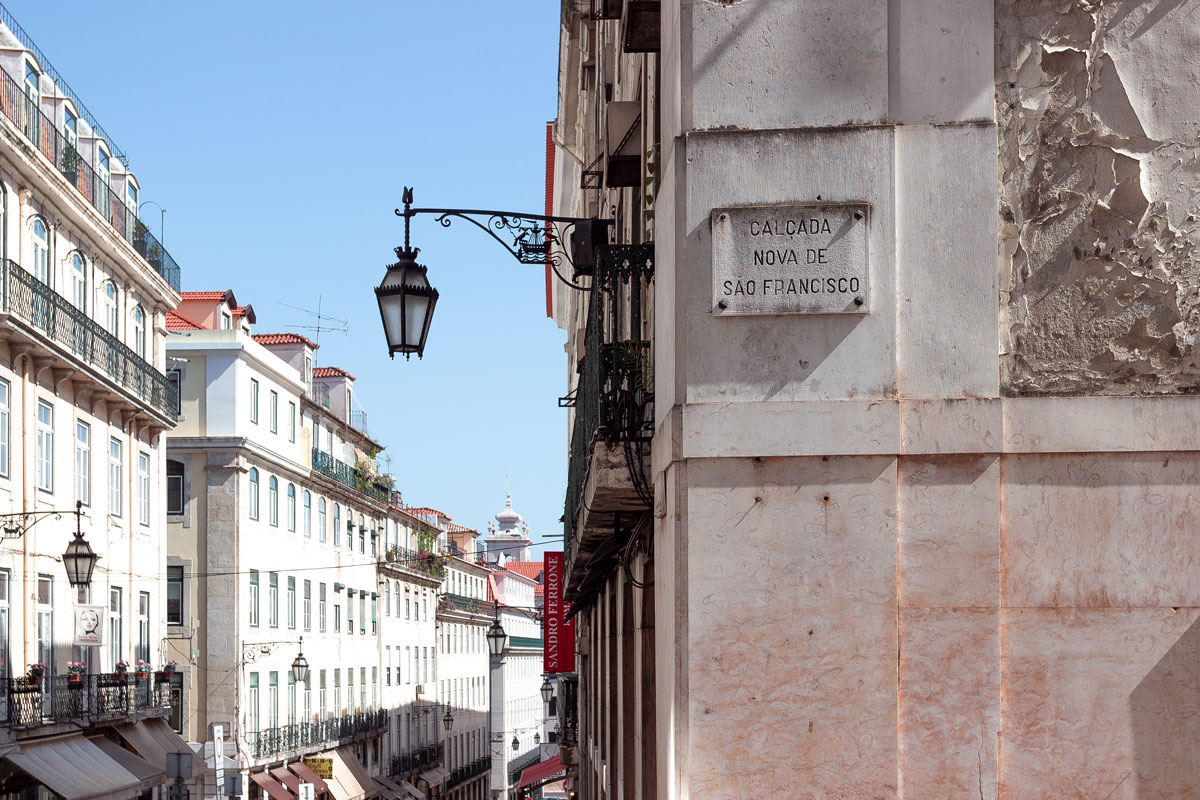
Beautiful Lisbon is hidden in millions of shades of yellow, orange, and red, applied to the texture of weathered walls; no, to the entire city!
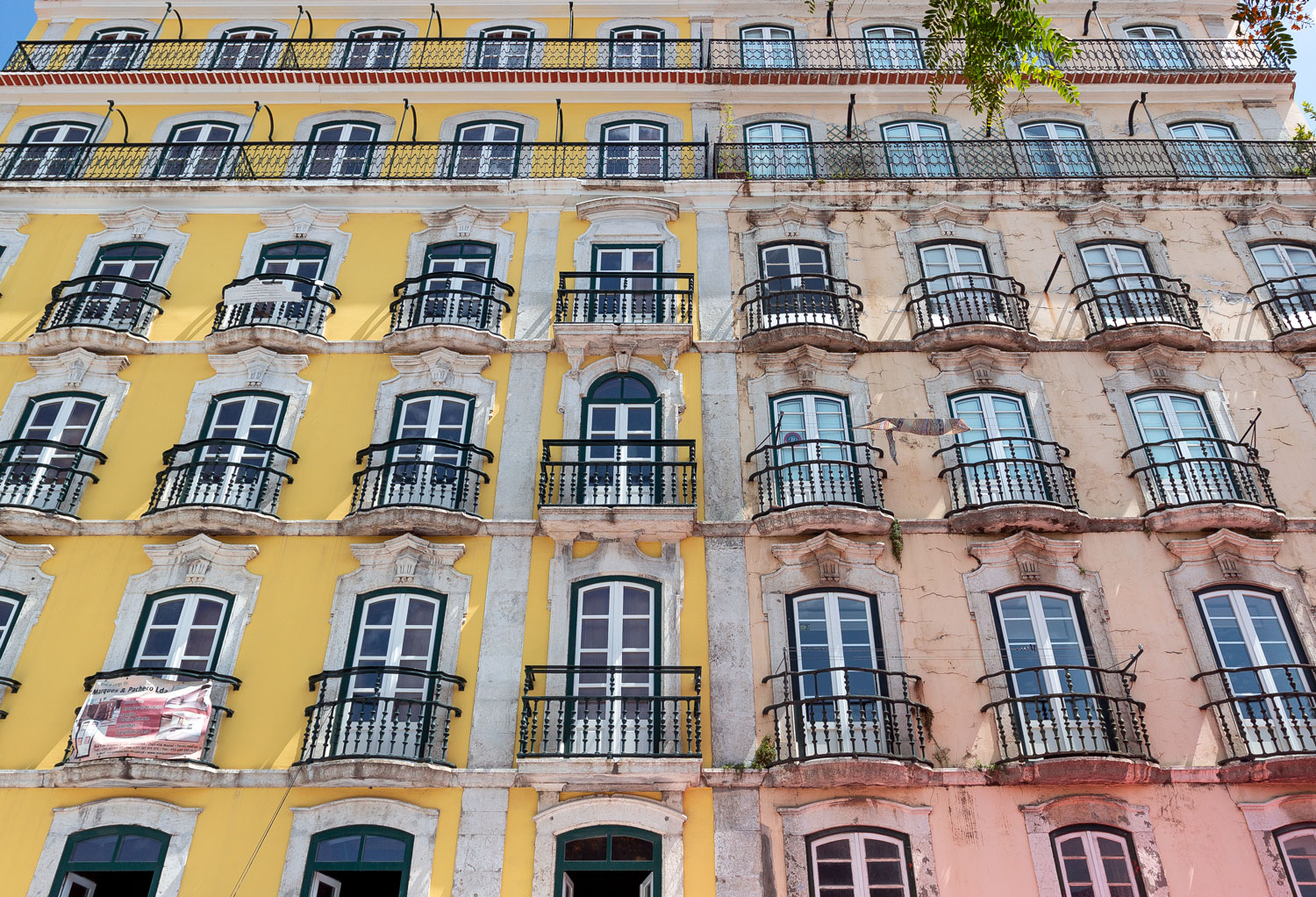


Beautiful Lisbon is hidden in the patterns of street art and graffiti, on which window reflections fall.


Beautiful Lisbon is hidden in an ice cream kiosk, shattered against the backdrop of passing boats.

Beautiful Lisbon is hidden in the terrace of a small café, about the size of a hut.
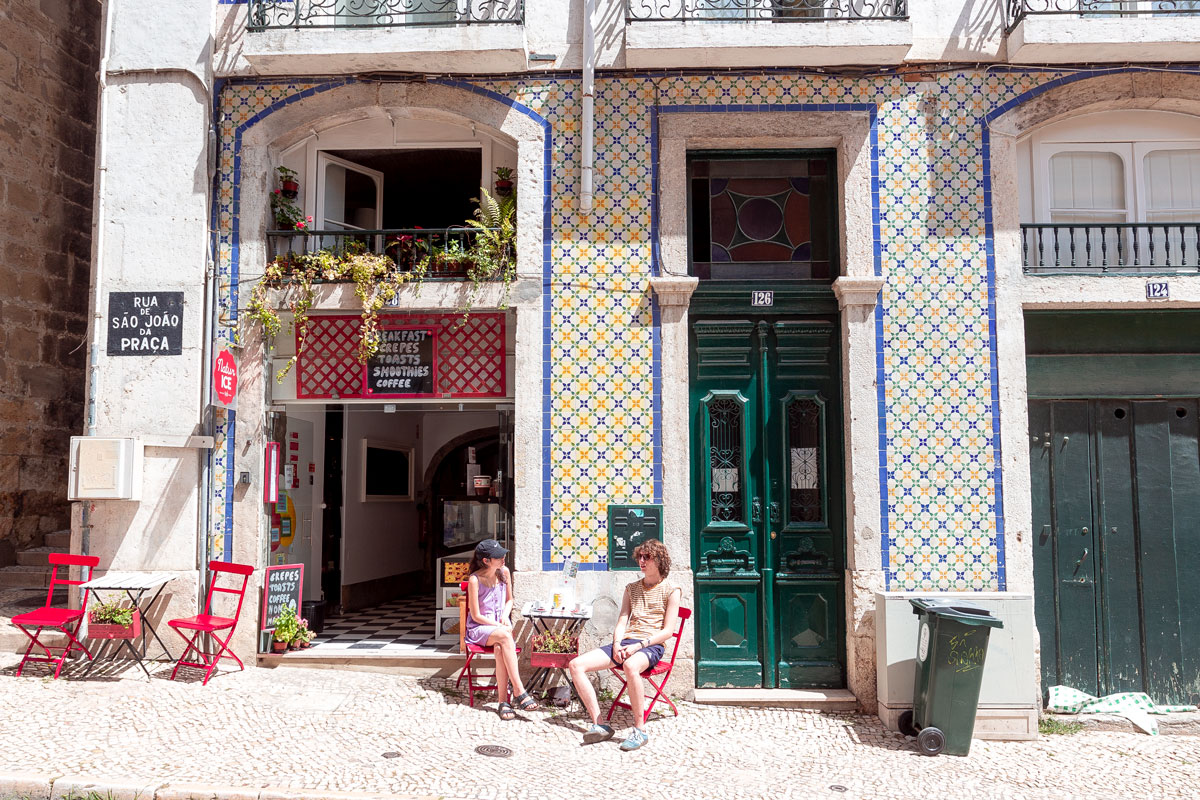
The urban views, caught “out of the corner of the eye,” are not far behind the views of Porto — and make Lisbon beautiful.
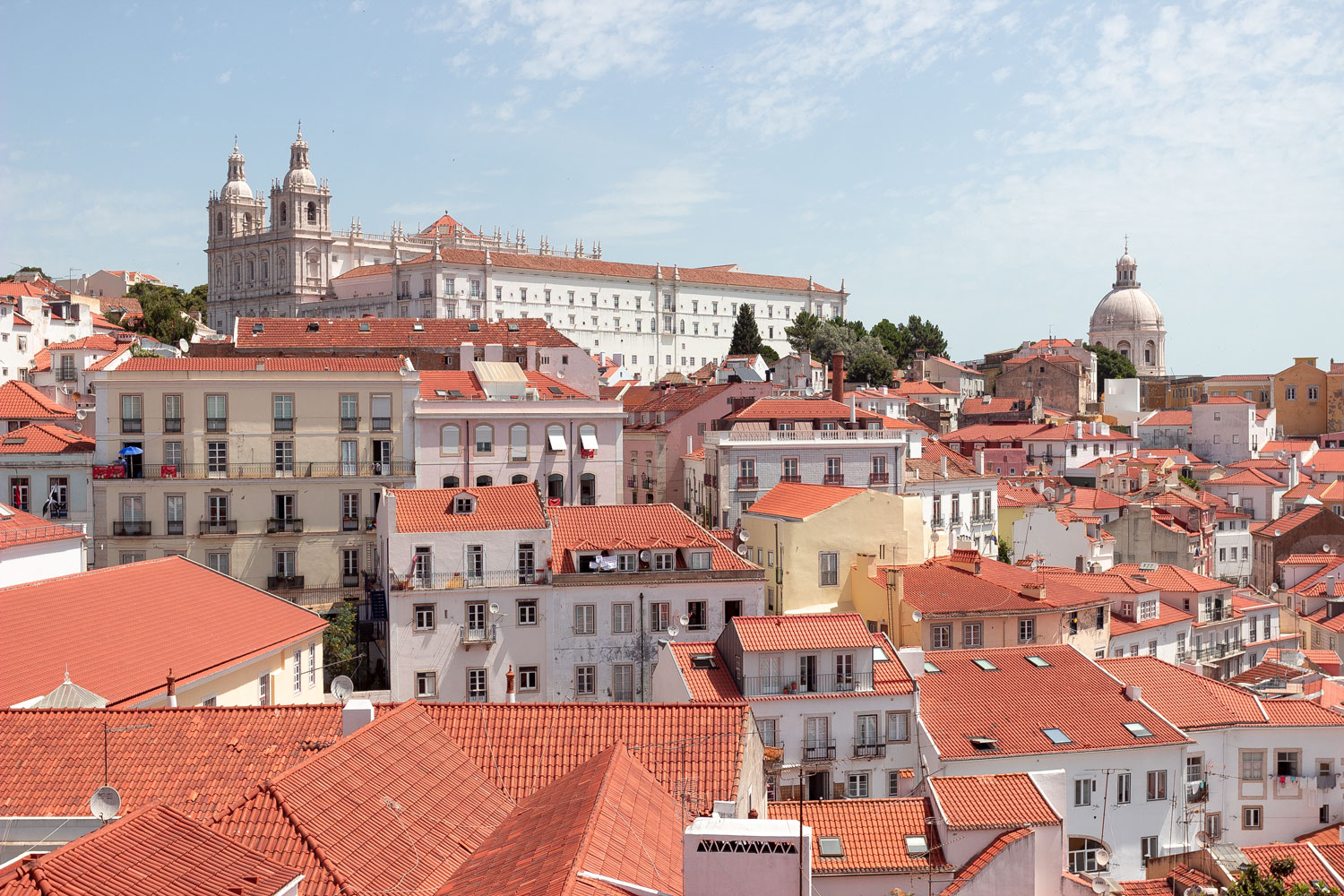
From the old castle hill, where the buzzing of the bridge cannot be heard and its structural details are not visible, Lisbon is incredible: as if San Francisco has been transported to Europe. Don’t look at the castle, look beyond it into the city.

In Lisbon, there are significantly fewer abandoned houses compared to its northern neighbor. While in Porto, the vibrant tiled beauty comes with the cost of dilapidation, in Lisbon, the architecture is in much better condition. Focus on individual houses and their parts, rather than looking at the streets as a whole.

Elevation changes will reveal incredibly complex landscapes, just capture them within the frame of a photograph.


Lisbon is one of the oldest cities in the world and the oldest city in Western Europe. In terms of antiquity, it is surpassed only by Athens and some cities in the Balkans, but it predates Rome by almost 500 years.
Throughout its history, Lisbon has experienced numerous epochs and rulers. This is reflected in its architecture: the city brings together an enormous variety of different styles that would be exhausting to even list.

Portugal’s architectural heritage begins with megalithic burial mounds, smoothly transitions through houses and towers of the Copper and Iron Ages, and sails towards Roman architecture with its forums, temples, and aqueducts.
Then, the architectural stream expands into a gigantic river. Here is an incomplete list of styles that can be found in Lisbon: Celtic, Roman, Manueline, Moorish, Romanesque; Portuguese Gothic, Mudéjar, Manueline, Plateresque, Isabelline, Mannerism; “Plain Architecture,” Baroque, Neoclassicism, Pombaline, Neo-Manueline.

Of course, I don’t know the meanings of all these words. And nobody needs to know. The only thing that matters is to find the ruins of a 14th-century Gothic castle in this vast metropolis. Find them and extract them from the city.
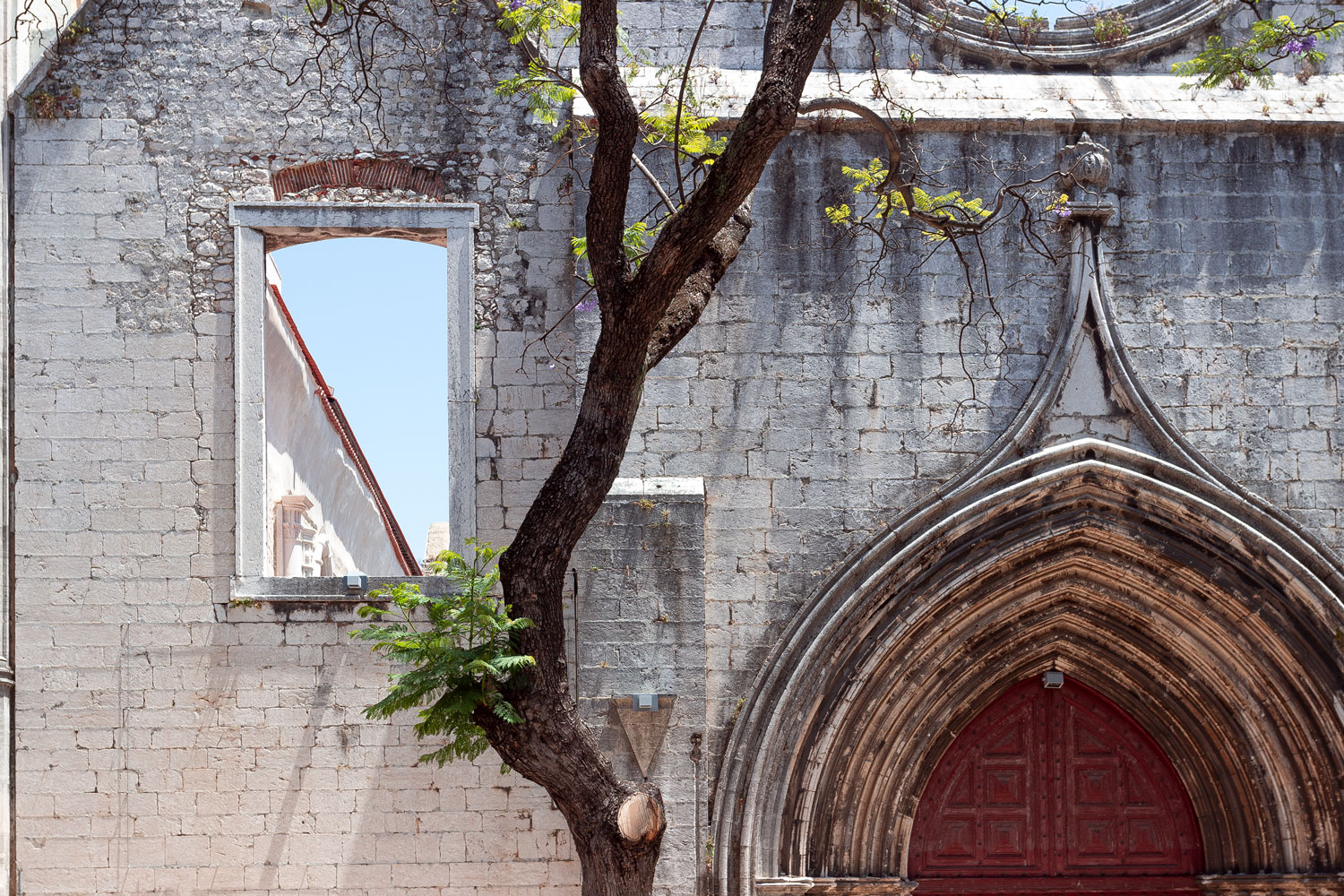
The enormous cast-iron elevator from 1902, built right on the street, won’t be captured easily. It needs to be found among the streets. Find it and capture it by enclosing it in the box of a camera. Just like ghost hunters used to do.
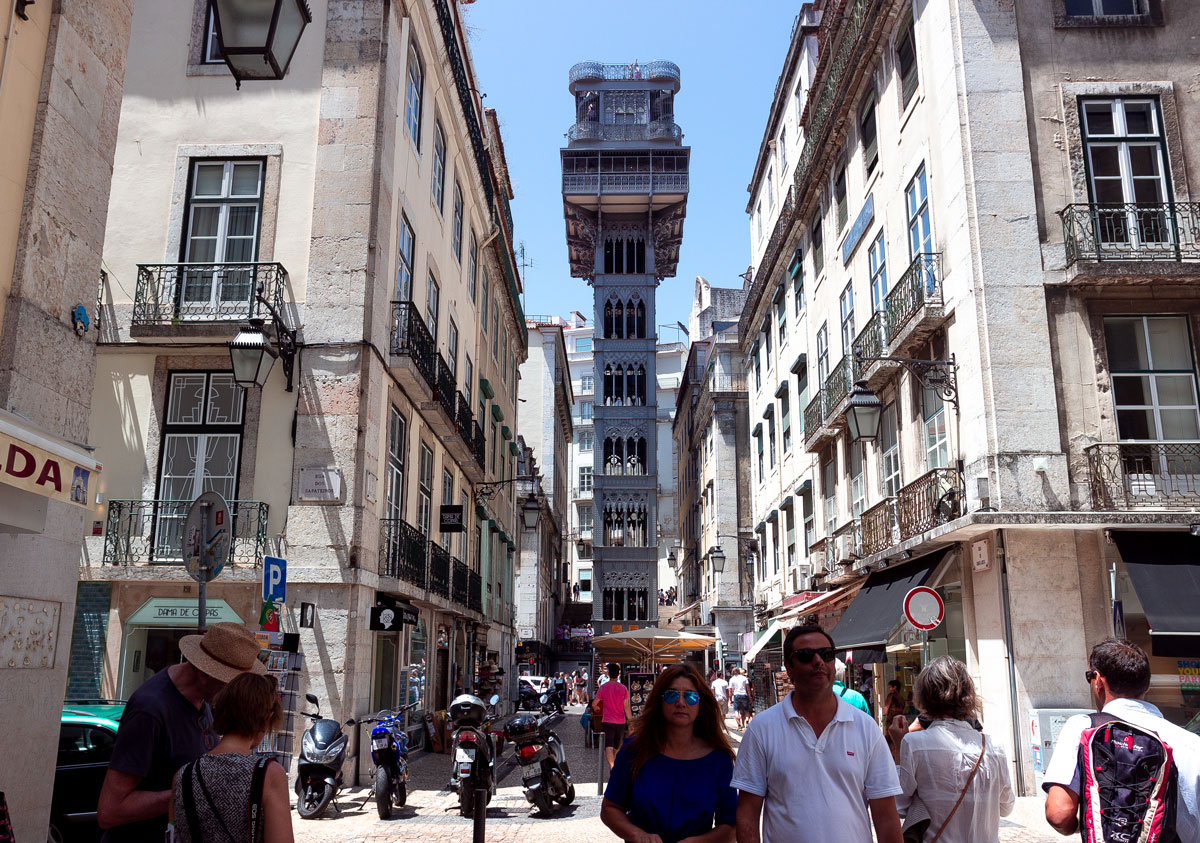
Then, with due diligence, perhaps even the streets themselves will be revealed — and Lisbon will briefly gather into a unified, whole city.
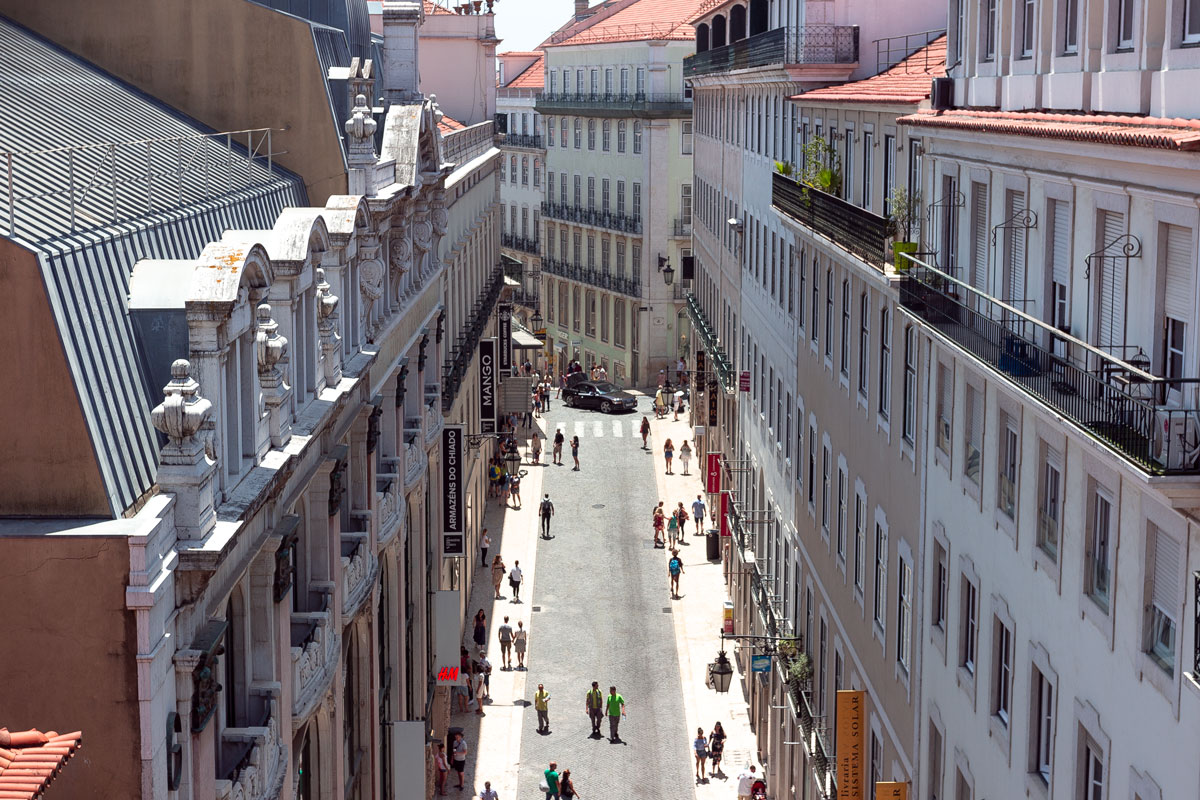


To instantaneously disperse again into thousands of small details, hundreds of unrelated frames, and dozens of unconnected places.



